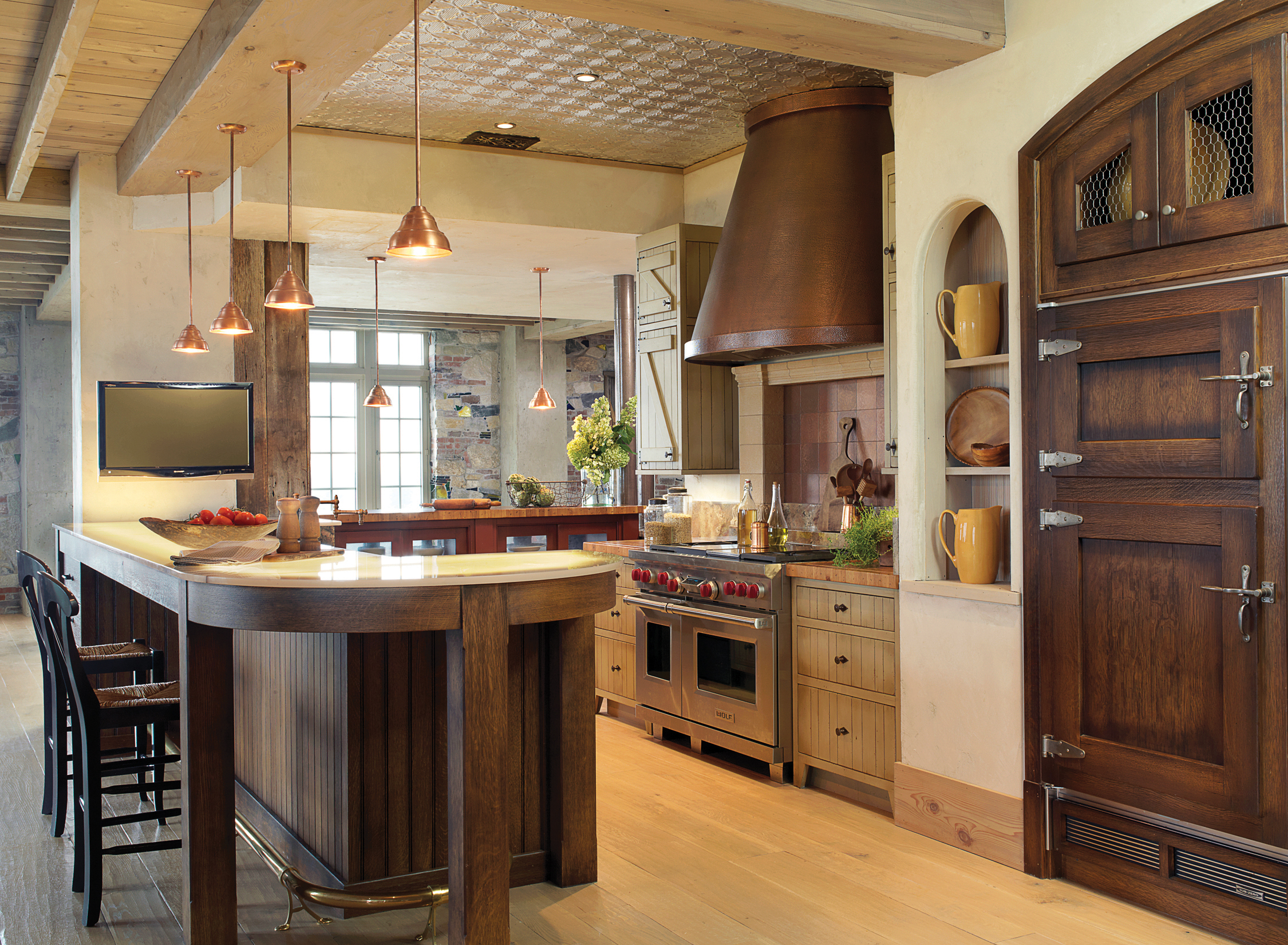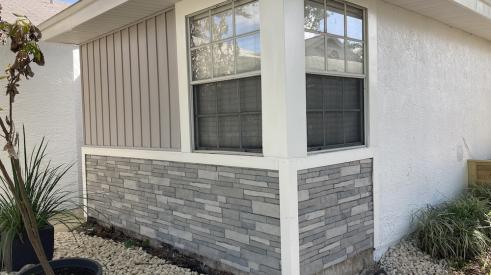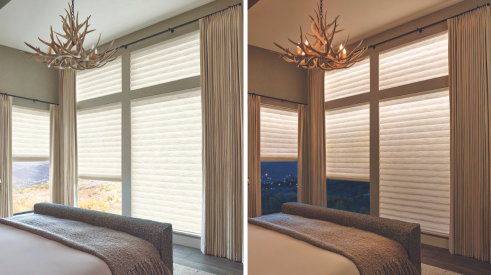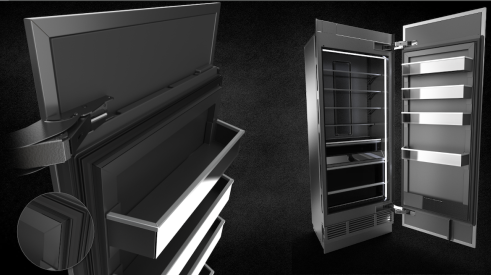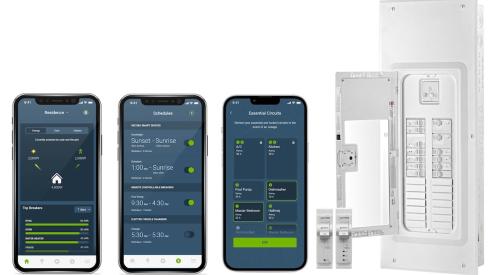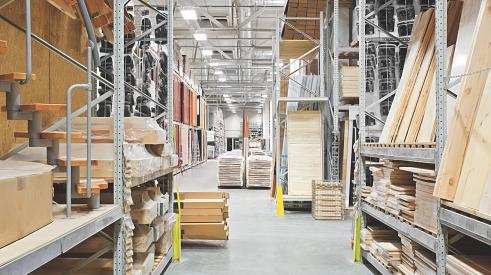Cooking, cleanup, and other kitchen activities can generate moisture, odors, grease, and even smoke. Uncontrolled, these potential air pollutants can lead to both air quality problems as well as maintenance issues. The kitchen designer is responsible for planning a balanced and efficient ventilation system that does not compromise user comfort and works with the existing mechanical systems in the home. Importantly, the designer needs to provide a ventilation system that will be used.
Residential ventilation systems are generally designed with the assumption that inside air is improved by mixing or replacing it with outside air. Air from outdoors is perceived to be fresher. Depending on the location of the home, this may not always be true. If the outside air is polluted, special ventilation systems may be needed that provide additional air filtration. In addition, in very cold climates, a heat-recovery or energy-recovery ventilation system may be recommended to provide more energy-efficient ventilation.
Choosing a ventilation system
In today’s kitchens, there are two common choices in ventilation systems. The first is a fan mounted above the cooktop or range, usually within a hood. The second is a proximity system, installed in the cooktop or adjacent to the cooking surface. Some kitchens may have a ceiling or wall-mounted exhaust fan, but that is generally not considered as effective as the updraft or downdraft systems. In addition, a house with a whole-house ventilation system will typically include an exhaust vent in the kitchen.
Kitchen ventilation systems are usually located near the cooking surface, considered the primary source of odors, heat, combustion pollutants, grease, and moisture. However, other appliances contribute to kitchen air pollution. An oven in a range typically vents through or near a burner on the cook top, putting moisture and odors in the vicinity of the ventilation system. A built-in or wall oven typically vents to the front of the appliance, into the room air, which may or may not be near the ventilation system. A microwave oven, which may vent to the front, side, or back, is often not placed near the kitchen ventilation system. Dishwashers also vent warm moist air.
Canopy or updraft systems can be either a recirculating (ductless) system or an exhaust system. Most downdraft systems are exhaust systems. A recirculating system pulls the air through a filter, then returns the air to the room. Thus, a recirculating system is a filtering system, not a ventilation system. The filter may be a simple grease filter screen or include an activated carbon filter to remove odors. Moisture and heat are not removed. Combustion pollutants from gas cooking, including carbon monoxide and water vapor, are also not removed. Recirculating systems are less expensive and easier to install, but less effective. Exhaust systems, on the other hand, remove air as well as heat, moisture, odors, combustion pollutants, and grease, from the kitchen to the outside. Generally, a recirculating system should only be used when it is impossible to install the duct work for an exhaust system.
There are many variables involved in designing an effective exhaust ventilation system for the cooking area in a kitchen, including: type of cooking; type of cooking appliance; type of cooking fuel; location of the range and/or cooktop; size and location of the hood, if used; size, length, and number of turns in the ducts needed to connect the fan to the exterior vent; type and size of fan used in the system; and make-up or replacement air available to the fan.
Updraft ventilation systems
Generally, a range hood with an exhaust fan vented to the outside (updraft) is considered the most effective system. The hood helps capture the pollutants, such as moisture and grease, before they disperse in the air in the kitchen. There are many styles and designs of hoods available. Some are a focal point in the room; others, such as retractable models, are barely noticeable. The placement of the fan above the cooking area takes advantage of the natural rise of the heated air.
A well-designed and properly placed hood can improve the efficiency of the ventilation system and can reduce the fan size needed. A hood should be at least the size of the cooking surface, and preferably 3 to 6 inches larger than the cooking surface, in all directions. Although ideal, this may be hard to achieve. Hoods are typically available in widths of 24 to 54 inches, so a hood wider than the cooking surface may be selected. However, few hoods have a depth greater than 17 to 21 inches. Hoods with greater interior height have a larger capture area, which increases efficiency.
The bottom of the hood should be 24 to 36 inches above the cooking surface. Kitchen Planning Guideline 18 recommends a minimum 24-inch clearance between the cooking surface and a protected noncombustible surface, such as a hood, above it. A larger hood can be mounted higher on the wall than a smaller hood, with comparable efficiency. If the same-sized hood is mounted higher on the wall, the fan size may need to be increased to maintain efficiency. Mounting the hood higher on the wall can provide better visibility to the cooking surface and access to large pots, especially on the back burners, and can prevent bumped heads. When selecting a hood, it is important to know how the ducts will need to be installed to exhaust air outside. Some ducts will run vertically and some will run horizontally. Not all hoods can accept ducts in both directions.
Microwave ovens, updraft system combos
Some microwave ovens are integrated with an updraft system, so they can be installed over a cooking surface. The microwave updraft system may be a recirculating system or an exhaust ventilation system. This type of system is not likely to be as effective because the flat bottom of the microwave lacks the canopy shape of a hood, which helps to trap pollutants. In addition, the microwave tends to be shallower than a hood (12 to 13 inches is typical), giving less coverage of the cooking surface. In addition, the microwave ventilation systems tend to be limited in fan size so they may not be appropriate over larger ranges or cooktops.
For the most ventilation efficiency, yet greatest safety, the combination microwave oven and updraft system should be installed at the 24-inch minimum clearance above the cooking surface, typically 60 inches above the floor (36-inch counter height plus 24-inch clearance). However, this would not meet the recommendations in Kitchen Planning Guideline 21, which recommends a microwave be installed with the bottom 3 inches below the shoulder of the principle user (which will be less than 60 inches for many cooks) and no more than 54 inches above the floor. In addition, the decision to install a microwave oven updraft system combination appliance is often made to visually align the appliance with wall cabinets and for ease of reach. Thus, the appliance is installed 15 to 18 inches over the cooktop or range. If your client is interested in a combination microwave oven and updraft/ventilation system, consider the type of cooking surface, the height of the cooking surface, the need for ventilation, the type of cookware and reach range. Be sure to follow all manufacturers’ instructions for placement and installation.
Downdraft ventilation systems
A downdraft or proximity ventilation system can be an effective alternative for grilling, frying, and other cooking from shallow pots and pans. The downdraft system, including those with “pop-up” vents, captures pollutants near their source. A larger fan is required in a downdraft system because there is no hood to help capture the cooking by-products therefore the fan must work against the natural tendency for warm air to rise. Before specifying a downdraft ventilation system, determine that there is space for the ductwork. PR
--
This article is excerpted from the NKBA Professional Resource Library volume: Bath Planning, Second Edition by Kathleen Parrott, PhD, CKE, Julia Beamish, PhD, CKD, JoAnn Emmel, PhD, and Mary Jo Peterson, CKD, CBD, CAPS, CAASH. Copyright: 2013 National Kitchen & Bath Association; published by John Wiley & Sons, Inc. This material is reproduced with the permission of John Wiley & Sons, Inc.
The kitchen designer is responsible for planning a balanced and efficient ventilation system that does not compromise user comfort and works with the existing mechanical systems in the home. Importantly, the designer needs to provide a ventilation system that will be used.
Add new comment
Related Stories
Pro's Picks: A Quick Install Composite Stone
This pro completed a high volume facelift project months ahead of schedule
Pella's New Debut Promises Faster, One-Person Window Installs
The window manufacturer promises 3.15x faster installation with its Steady Set system
Marvin Releases Switchable Privacy Glass Window
The privacy glass windows can be purchased from Marvin's Direct Glaze windows
Innovative Products: Window Shades That Create Natural Light
Wait, shouldn't window shades keep light out?
New Insulation Innovation Reshapes Our Thinking of Refrigeration
Whirlpool Corporation's latest innovation allows refrigerators to do more and be more
Innovative Products: A Whole-Home Energy Monitoring System
Homeowners can control their lighting, load control, and EV charging through one app
Pro's Picks: A Paperless Note-Taking Tablet
This remodeler recommends a tablet that makes note-taking and document organization easier
Building Materials Show Stability in 2023
Although supply chain bottlenecks have eased in recent months, shortages of some key materials persist.



